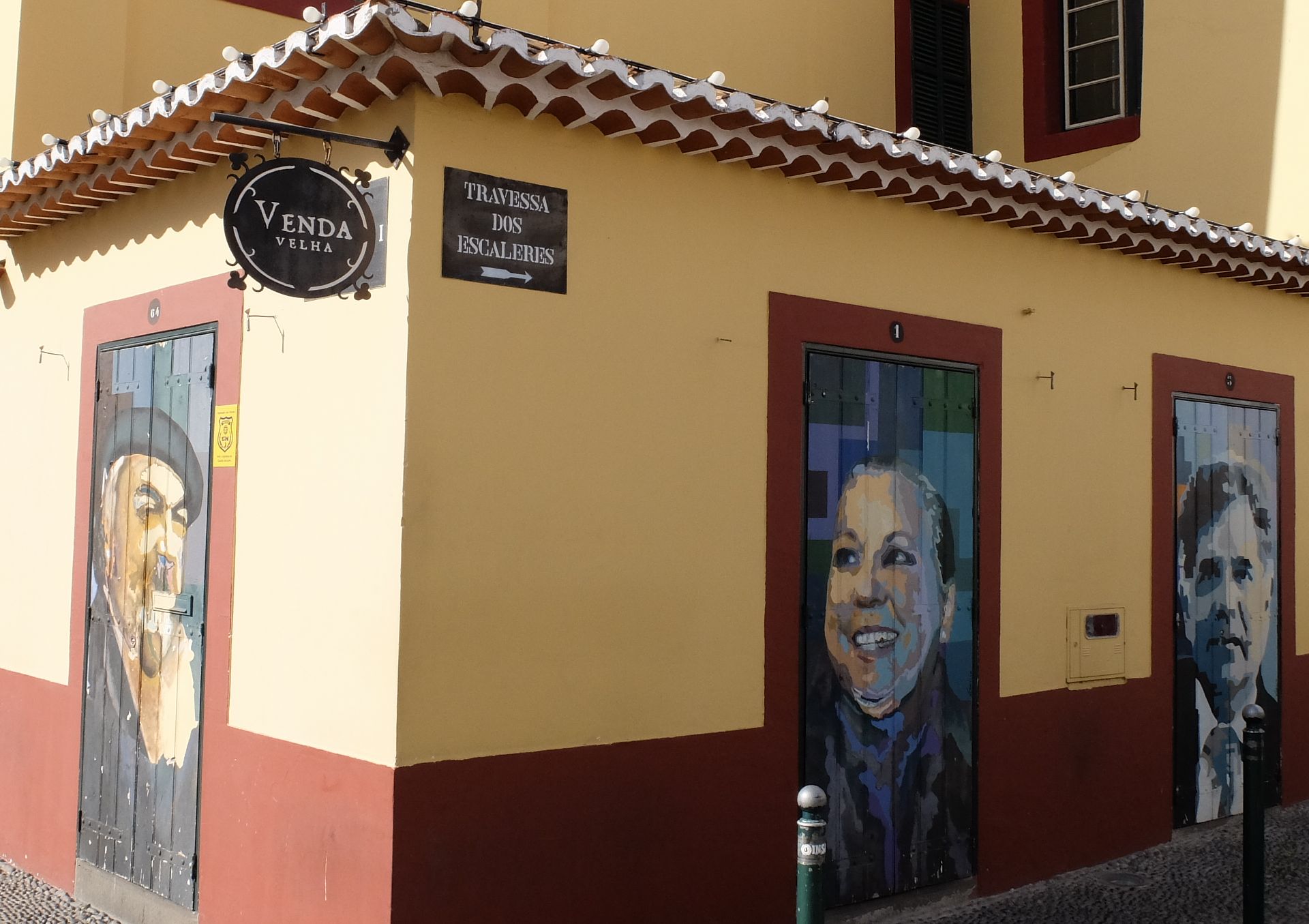All content and media files are published under a Creative Commons Attribution-ShareAlike 4.0 International License (CC BY-SA 4.0)
How much money and time do you think it takes to turn one of Funchal's most abandoned and dreary streets into an economically thriving and attractive tourist destination? The correct answer is a few days and a feasible sum for the city government to buy brushes and paints!
In 2010, the municipality of Funchal launched the Art of Open Doors project, inviting artists from all over the country and giving them freedom of expression. In a short time, the dreary quarter of the old town literally "played out in fresh colors"!
Madeira was discovered by the Portuguese at the beginning of the 15th century. The island had been deserted until the first settlers appeared on the site of modern Funchal in 1424. In 1508, it was given the status of a city. That's when Santa Maria Street appeared. For 500 years of its existence, it has remained the same long, narrow (no car will pass!), cobbled street running parallel to the embankment from Funchal Farmers' Market ("Mercado dos Lavradores") to the Fort of Sao Tiago.
This street was once very busy. It took five centuries for it to decay and for the owners of the buildings to move to greener and more comfortable areas. Thus, the city faced a difficult task: to breathe new life into this quarter and attract tourists here. Artists invited to the Art of Open Doors project were permitted to paint the doors of the street with any subject matter (by the way, it was quite difficult to get permission from the property owners who did not live here but were still guarding their property). As a result, the city has finally got a unique place filled with street art and graffiti. The first floors of empty houses are occupied by numerous restaurants, souvenir shops, and artists' workshops.
The pictures on the doors are very diverse. Almost each of them makes you stop, think, and take a picture of the art object. Many works are dedicated to Madeira and its sights. Some doors are painted by students of the local school. There are even real installations, for example, the one from old keys. Some doors and walls have poems written on them instead of pictures. Every year, artists come together to update their creations and brighten up new spaces. There are no bare doors, but there are still some empty spaces on the walls.
